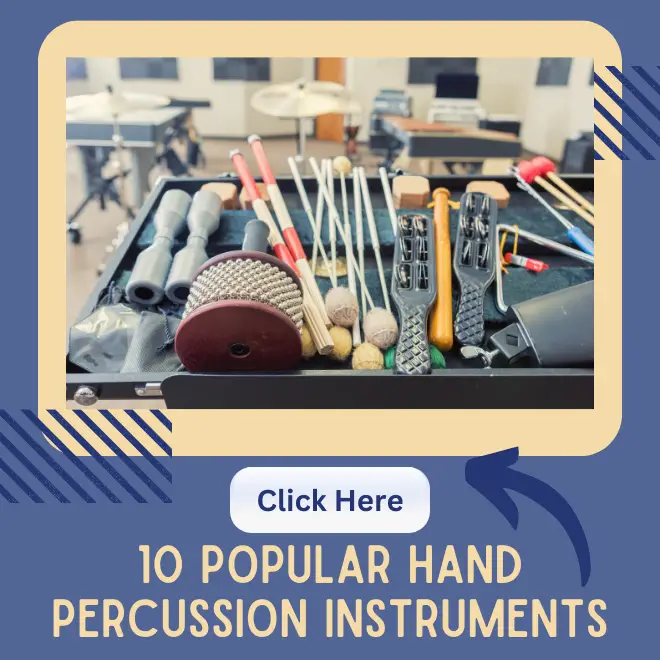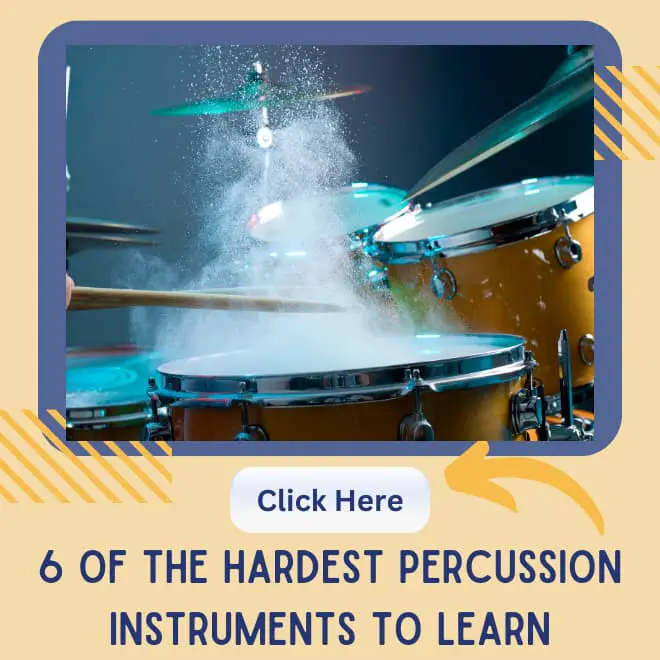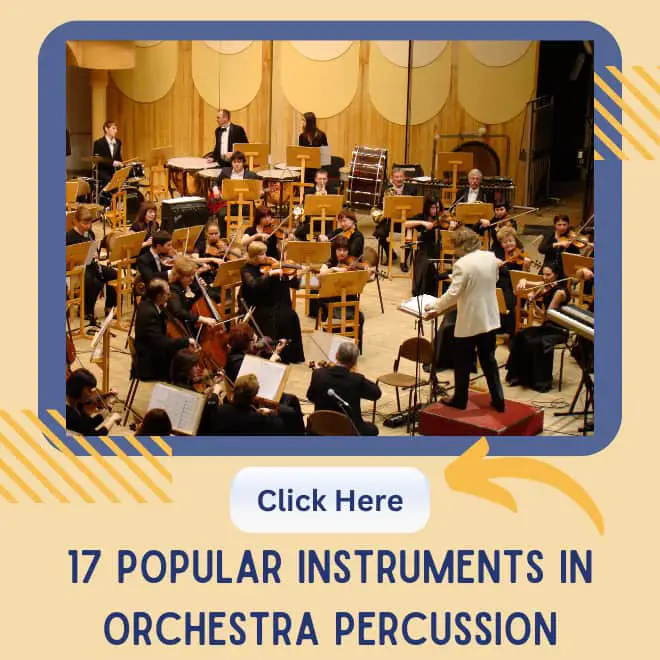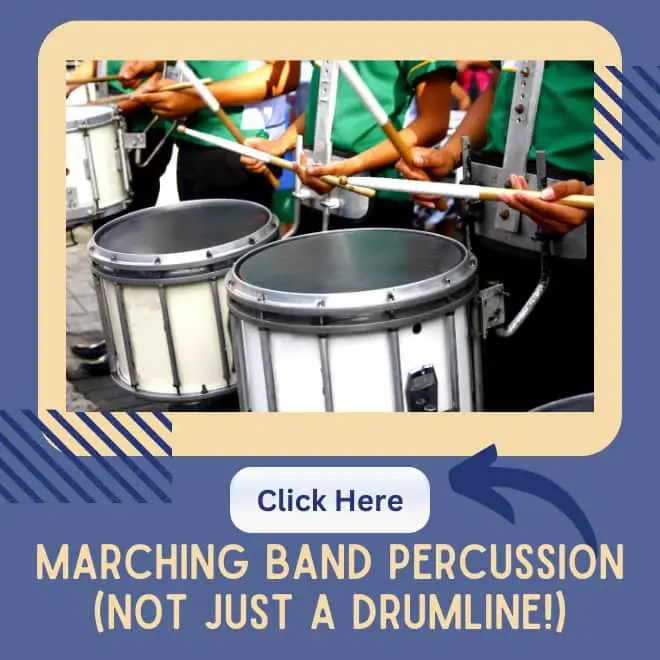Do you feel the pulse of the music coursing through your veins? That rhythmic energy that stirs your spirit and makes you want to move? You can thank percussion instruments for that invigorating sensation.
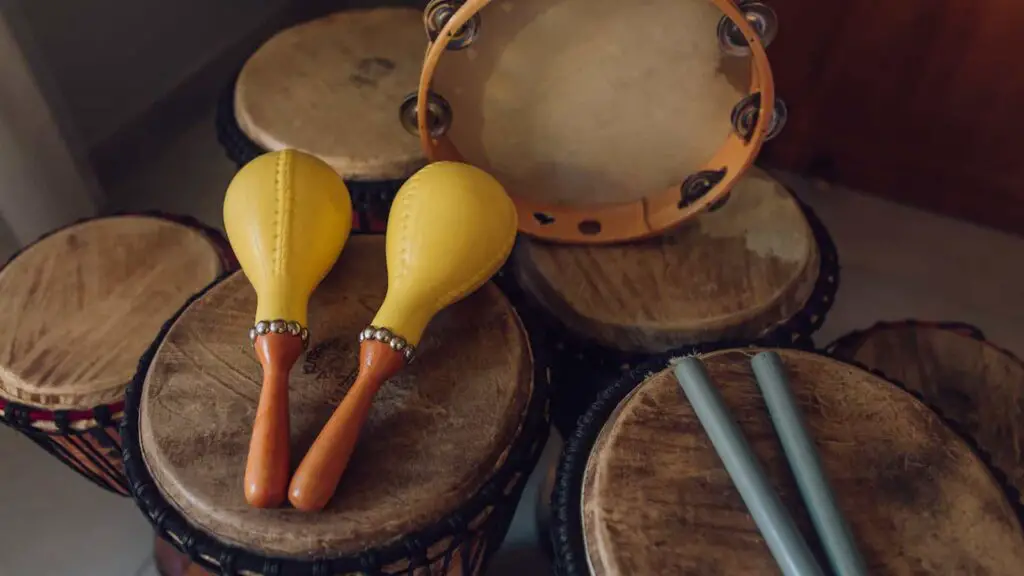
In this article, we’ll dive into the world of percussion, exploring its history, different types of instruments, famous percussionists, playing techniques, and more. So, grab your drumsticks, and let’s embark on a rhythmic journey!

Percussion instruments provide the heartbeat, the foundation upon which melodies and harmonies are built. These instruments produce rhythmic patterns and sounds by being struck, shaken, or scraped. They add depth, texture, and excitement to musical compositions, making them truly come alive.
History
The origins of percussion instruments date back to ancient times. Humans discovered that they could produce sound by hitting objects, and thus, the earliest percussion instruments were born.
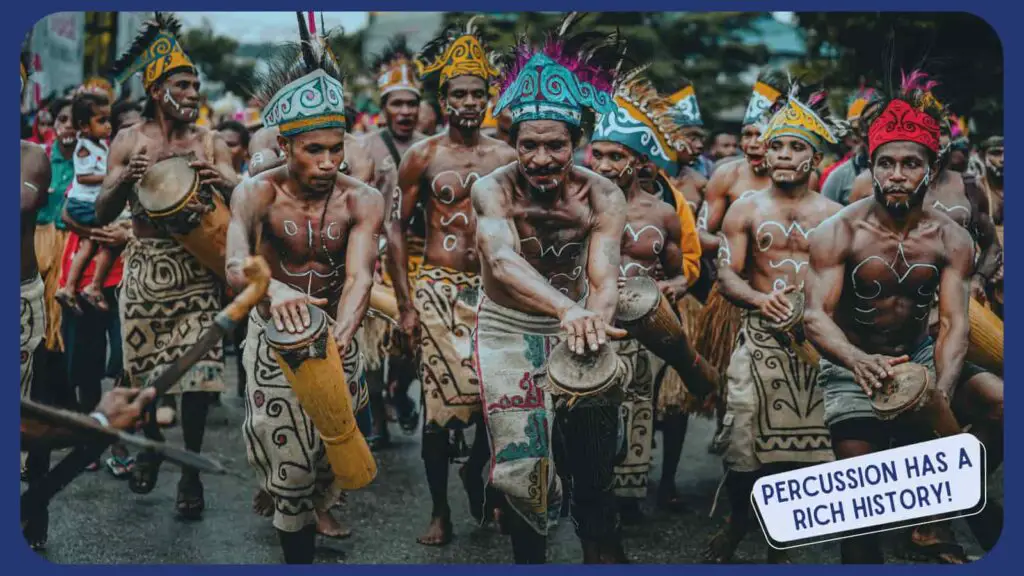
From the beating of drums in tribal rituals to the sophisticated percussion ensembles of classical orchestras, the history of percussion is rich and diverse. Throughout the centuries, percussion instruments have evolved in design, materials, and playing techniques, reflecting the cultural and technological advancements of civilizations.
Types of Percussion Instruments
Percussion instruments can be classified into three main categories: membranophones, idiophones, and auxiliary percussion instruments.
Membranophones
Membranophones produce sound through the vibration of a stretched membrane or drumhead.
The construction of membranophones typically consists of a hollow body, often made of wood or metal, with a tightly stretched membrane covering one or both ends. The membrane can be made from animal skin, such as goat, calf, or fish, or synthetic materials like plastic or Mylar.
The tension of the membrane and the method of striking or rubbing it determine the pitch, tone, and resonance of the instrument. From the thunderous bass of the bass drum to the crisp snap of the snare drum and the intricate patterns of the tabla, membranophones offer a vast range of sonic possibilities.
These percussion instruments are integral to various music genres, including orchestral music, jazz, rock, folk, and traditional music from cultures across the globe.
1. Bass Drum: A large drum with a single drumhead played with a mallet or pedal. It provides a deep, booming sound and forms the foundation of many ensembles.
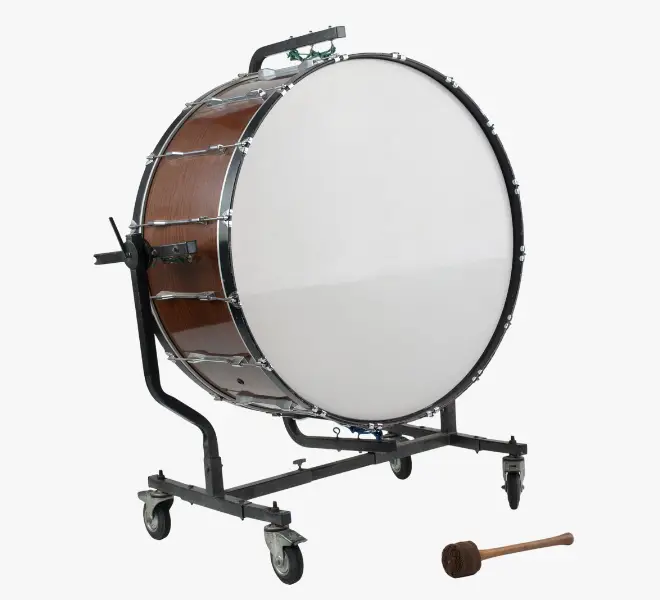
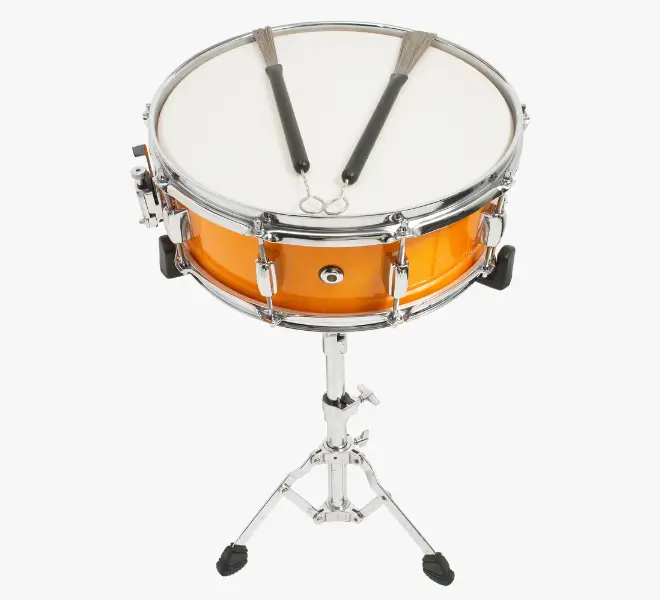
2. Snare Drum: A versatile drum with metal or gut snares stretched across the bottom drumhead, creating a distinctive buzzing sound. It is played with drumsticks or brushes.
Tom-toms: A set of cylindrical drums with varying sizes and pitches. Tom-toms are commonly used in drum sets and provide melodic and rhythmic accents.
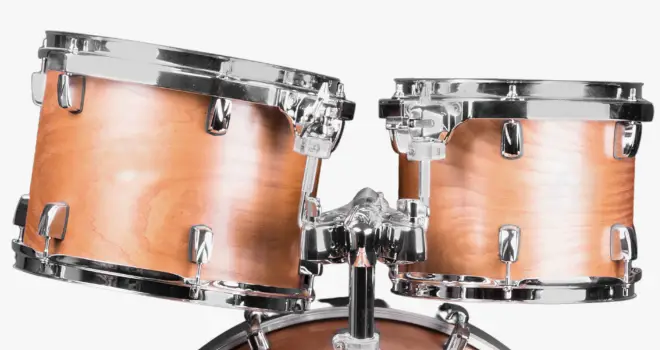
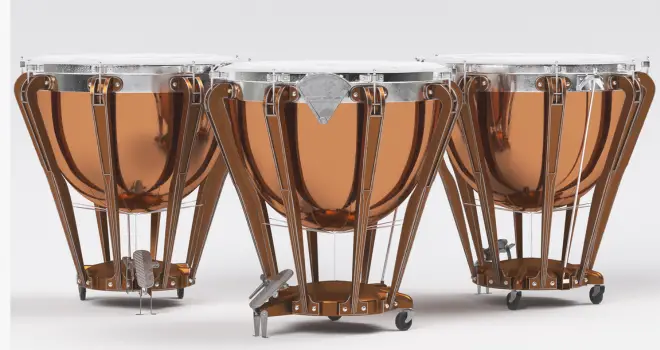
Timpani: Also known as kettle drums, timpani feature large hemispherical shells with a tunable drumhead. They are tuned to specific pitches and are played with timpani mallets.
Djembe: A West African drum with a goblet shape and a skinhead stretched over the top. Djembes produce a wide range of tones and are played with the hands.
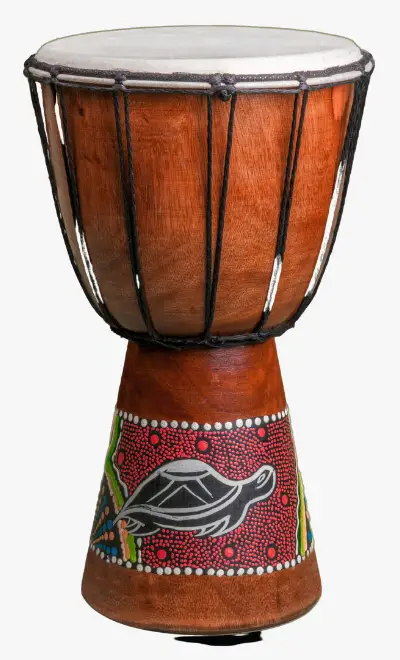
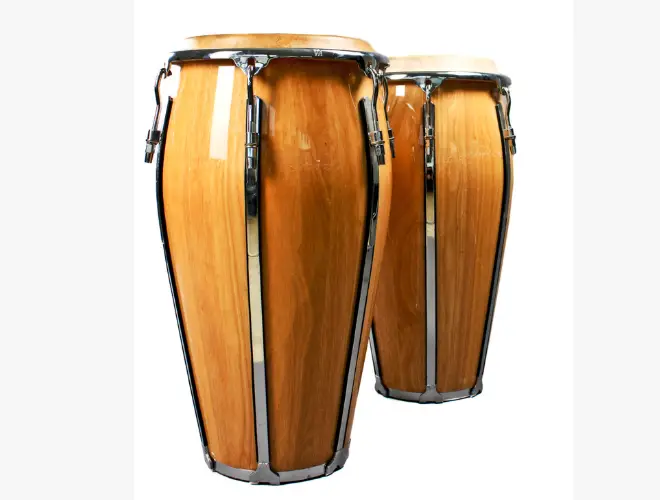
Congas: Tall, narrow drums of Afro-Cuban origin. Congas produce distinct pitches and are played with the hands and fingers.
Tabla: A pair of Indian drums consisting of a small, high-pitched drum (dayan) and a larger, lower-pitched drum (bayan). They are played with fingers and palms and are integral to classical Indian music.
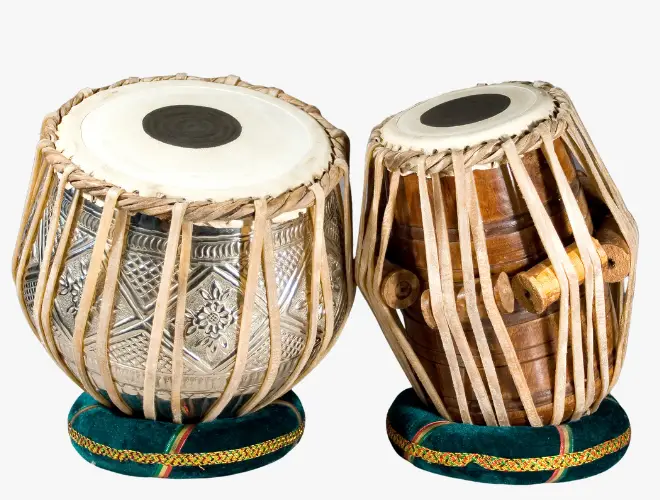
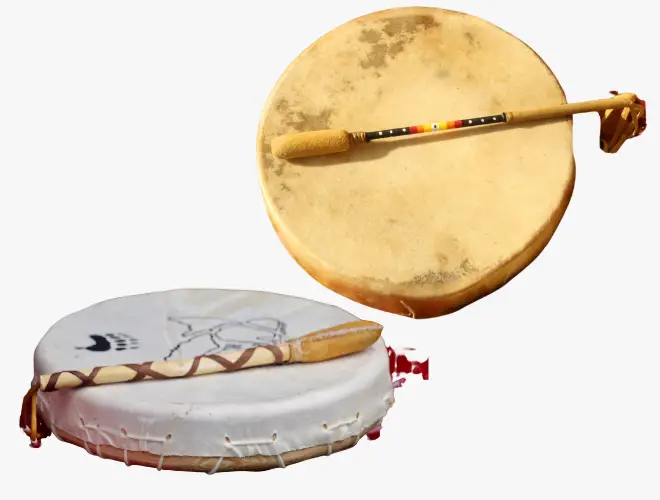
Frame Drums: Shallow drums with a circular frame and a single drumhead. They are played by striking the drumhead with the hands or using a beater.
Bongos: A pair of small, open-ended drums attached together. Bongos are played with the fingers and palms and are commonly used in Latin and Afro-Cuban music.
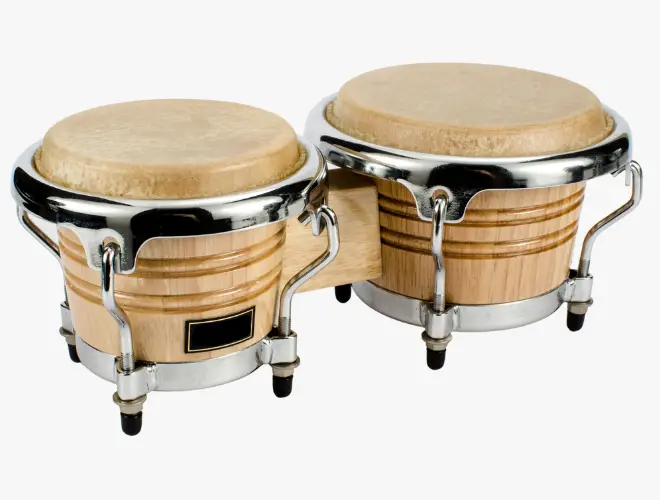
These are just a few examples of membranophones, and there are numerous other variations and regional drums that fall under this category. Each membranophone has its unique characteristics, playing techniques, and cultural significance, contributing to the vibrant world of percussion instruments.
Idiophones
Bells: Instruments with a hollow, metallic body that produces sound when struck or shaken, such as church bells or handbells.

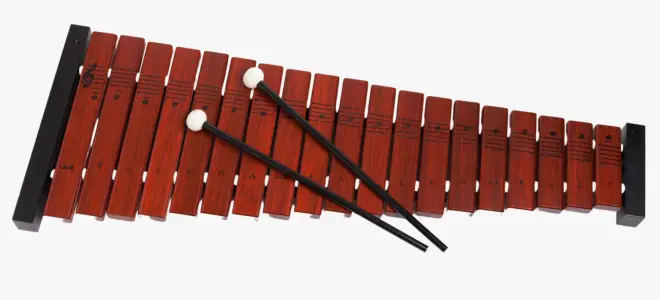
Xylophones: Instruments consisting of wooden bars of different lengths that are struck with mallets to produce specific pitches.
Marimbas: Similar to xylophones, but with larger resonators beneath the bars to enhance the sound and resonance.
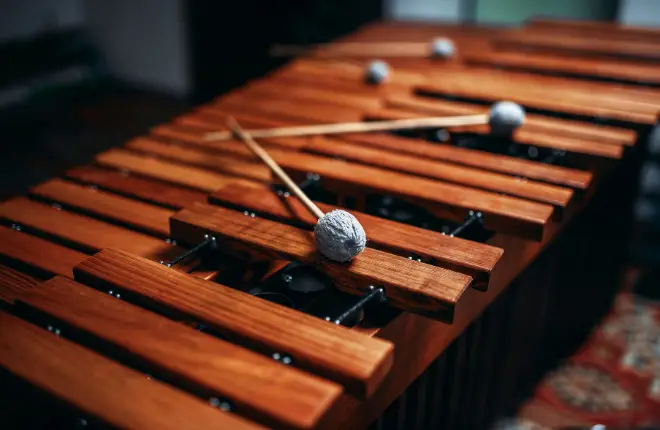
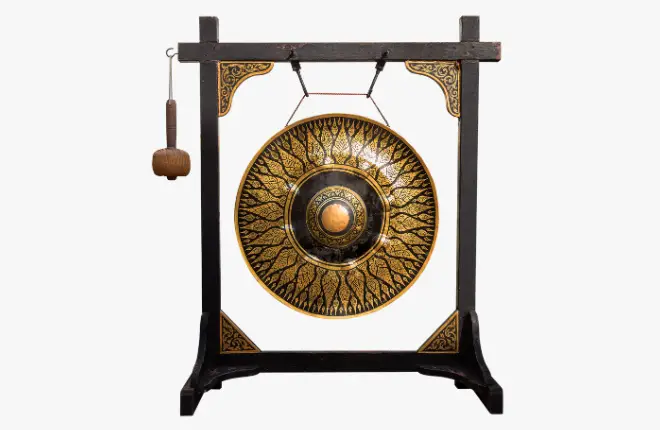
Gongs: Large, flat circular metal discs that produce deep, resonant tones when struck.
Cymbals: Concave metal plates that create crashing or ringing sounds when struck together or with drumsticks.
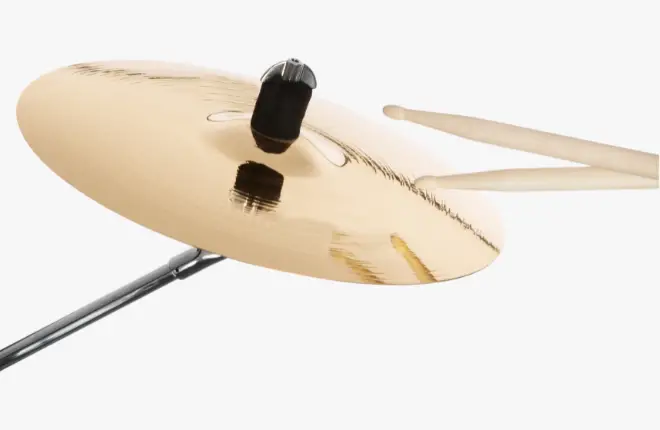
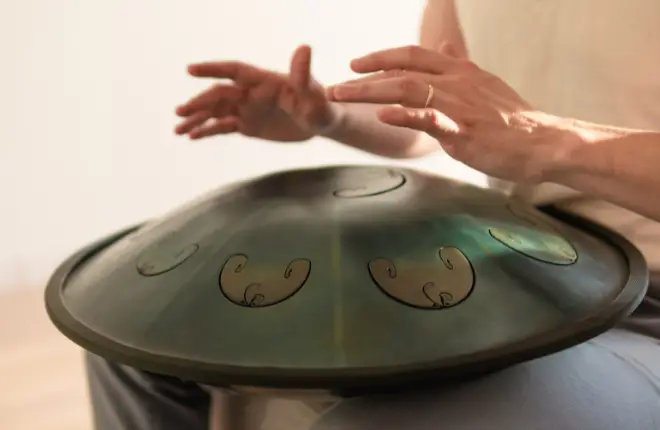
Handpan: A modern idiophone with a concave steel surface and tuned notes, played by striking with the hands.
Kalimba: Also known as a thumb piano, it consists of metal or wooden keys that are plucked or struck to produce melodic tones.
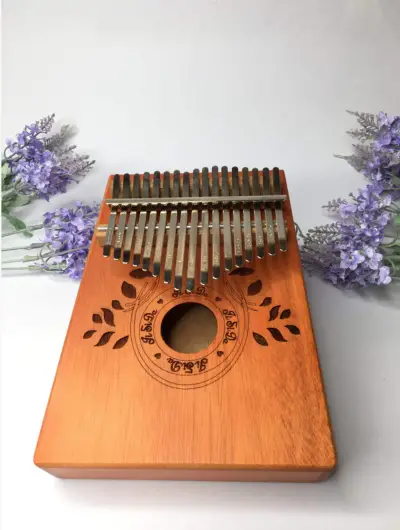
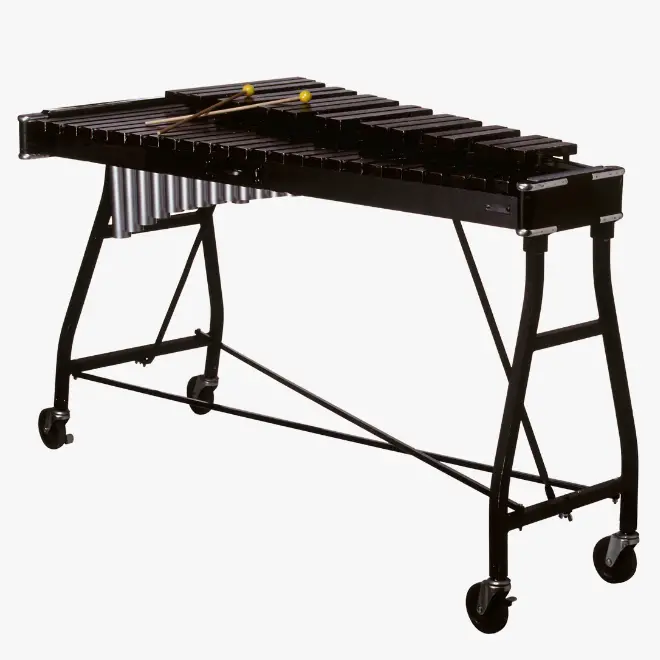
Vibraphone: A percussion instrument with metal bars that are struck and produce a vibrato effect through the use of motor-driven rotating discs.
Castanets: Handheld percussion instruments made of two concave wooden shells that are clicked together to produce rhythmic sounds.
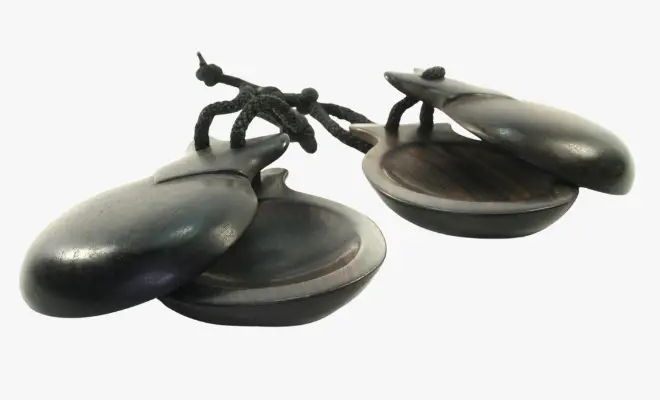

Triangle: A small metal rod bent into a triangular shape, played by striking it with a metal beater.
Cowbells: Metal bells with a clapper inside that are struck with a mallet or played by hand.
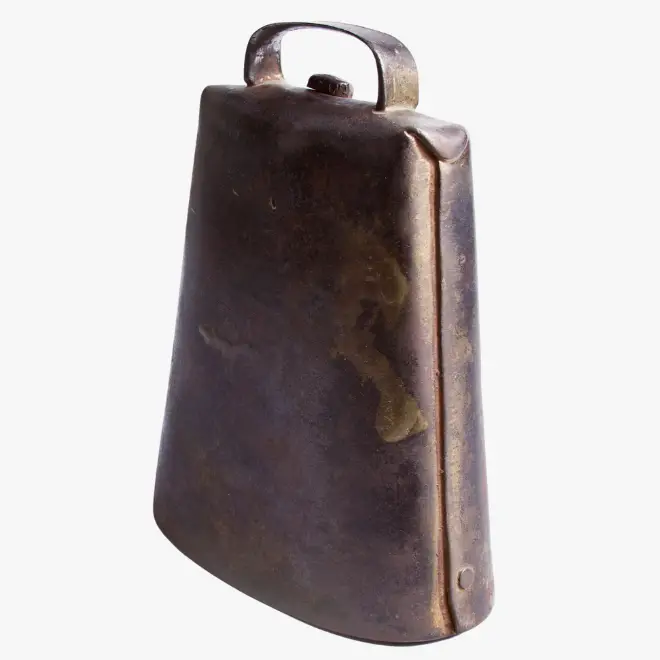
These are just a few examples of idiophones, and the category encompasses a wide range of instruments from various cultures and musical traditions. Idiophones offer a diverse array of unique sounds and play an integral role in adding texture and rhythm to music.
Famous Percussionists
Throughout history, many talented percussionists have left an indelible mark on the world of music. From jazz legends like Gene Krupa and Buddy Rich to rock icons like Keith Moon and John Bonham, these virtuosos have pushed the boundaries of rhythm and showcased the true artistry of percussion. Their unique styles and contributions have influenced generations of musicians, inspiring aspiring drummers worldwide.
Percussion Techniques
Playing percussion instruments requires skill, precision, and a deep understanding of rhythm and dynamics.
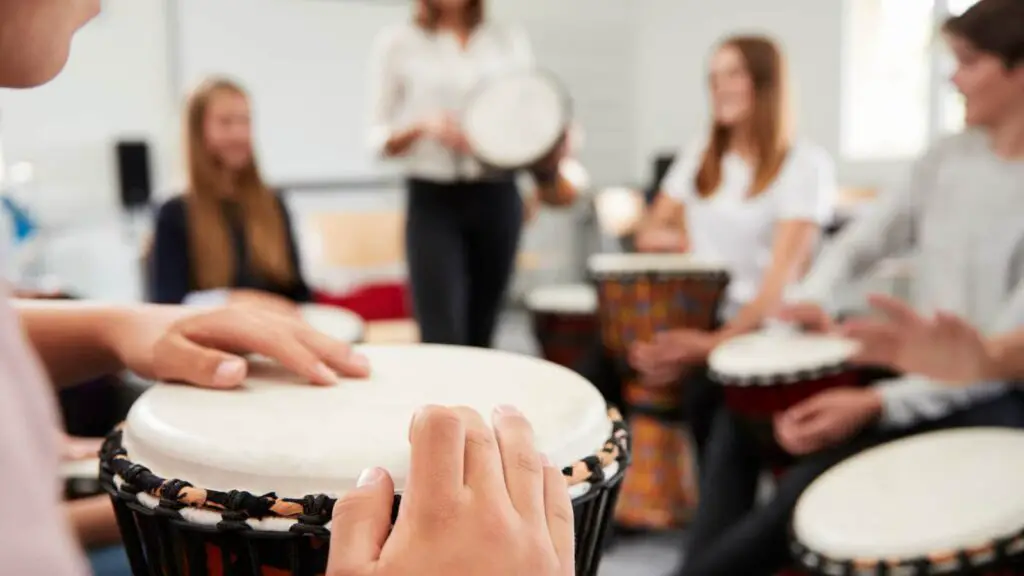
Percussionists employ various techniques to produce a wide range of sounds and effects. From the steady beats of a bass drum to the rapid rolls on a snare drum, each stroke is executed with purpose and control. Techniques like rimshots, ghost notes, and paradiddles add complexity and nuance to the music, creating captivating rhythms that captivate listeners.
Popular Percussion Instruments
The world of percussion is vast and diverse, encompassing a multitude of instruments. Some of the most popular percussion instruments include tenor drums, cymbals, tambourines, maracas, and shakers.
Drums come in various sizes and types, such as the bass drum, snare drum, and tom-toms. Cymbals add shimmer and brilliance to the music, while tambourines provide a jingling and shaking sound. Maracas and shakers contribute a rhythmic texture, enhancing the overall groove of a piece.
In the world of percussion, there is something for everyone! Check out some of our most popular percussion articles below. From the most popular to the most difficult, I know you will enjoy learning about these unique and exciting instruments!
Percussion in Different Cultures
Percussion instruments hold great significance in cultures around the world. They play a crucial role in traditional ceremonies, celebrations, and rituals. For example, the djembe in West Africa is used to communicate, celebrate, and connect with ancestral spirits.
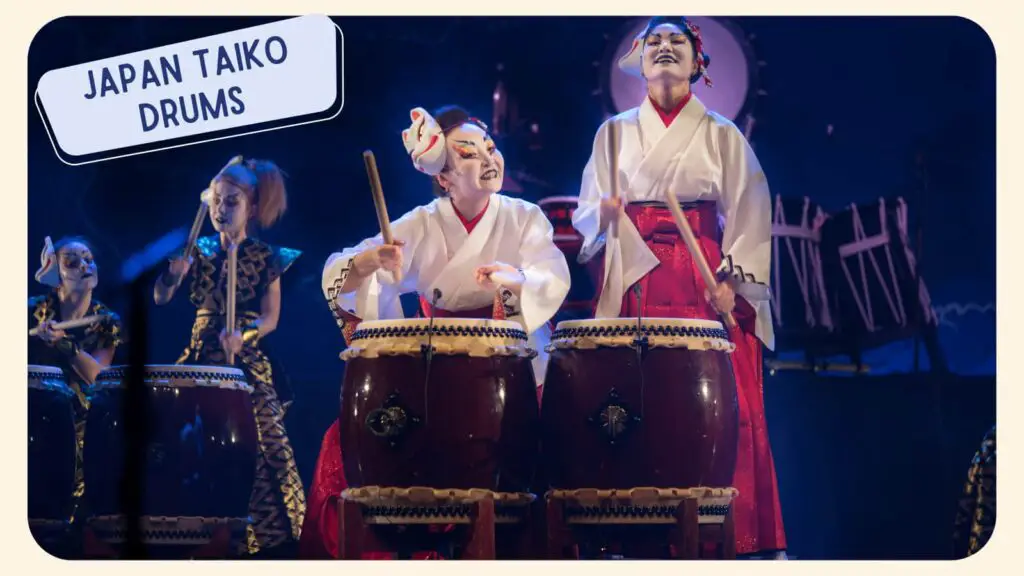
Taiko drums in Japan are deeply rooted in cultural and historical traditions, accompanying theatrical performances and festivals. The tabla in Indian classical music showcases the intricacies of rhythm and melody. Exploring percussion in different cultures opens up a treasure trove of rhythmic expressions and musical traditions.
Percussion in Music Genres
Percussion instruments feature prominently in various music genres, each with its own distinct style and approach. In classical music, percussion provides the backbone of the orchestra, adding power and intensity to symphonies and concertos.
Jazz relies heavily on improvisation, and percussionists play a crucial role in creating complex rhythms and syncopations. In rock music, drums drive the energy and serve as the heartbeat of the band. World music genres showcase the diverse sounds and rhythms of different cultures, incorporating percussion instruments unique to each tradition.
Percussion Ensembles
Percussion ensembles bring together a diverse array of percussion instruments, creating a mesmerizing symphony of beats and rhythms. These ensembles can range from small groups to large-scale orchestras, featuring instruments like marimbas, vibraphones, glockenspiels, and more.
Percussionists in ensembles collaborate closely, blending their individual skills to create a cohesive and captivating performance. The precision and synchronization required in these ensembles are truly awe-inspiring.
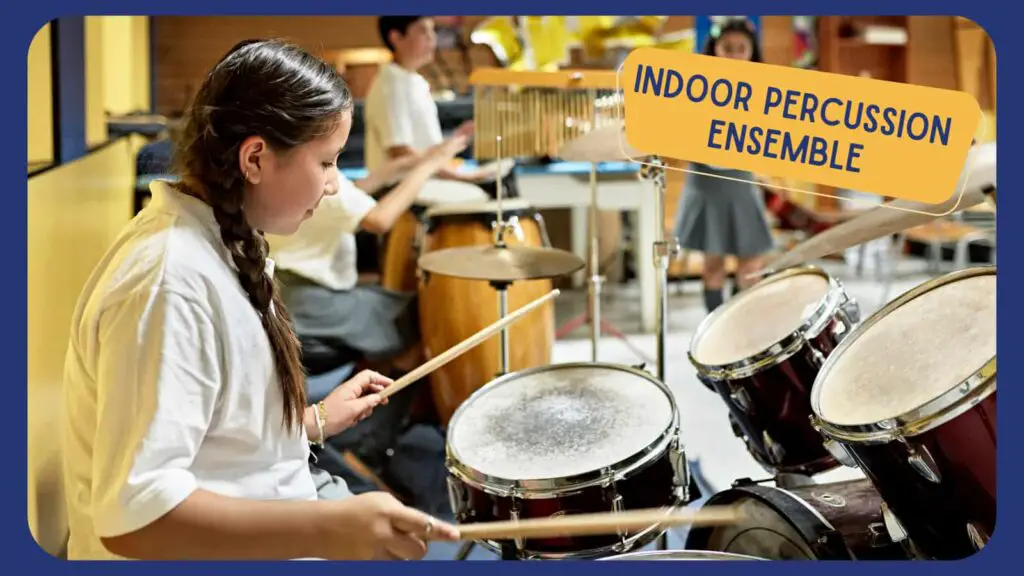
Health Benefits
Playing percussion instruments not only brings joy and artistic expression but also offers numerous health benefits. The physical act of drumming engages the entire body, providing a full-body workout and improving coordination, dexterity, and motor skills.
The rhythmic nature of percussion can also reduce stress, promote relaxation, and enhance cognitive function. Moreover, the sense of community and camaraderie that comes with playing in a percussion ensemble fosters social connections and a sense of belonging.
Percussion Education
For those inspired to learn and master percussion, there are ample opportunities for education and growth. Music schools, conservatories, and private instructors offer structured lessons to beginners and advanced students alike. Online resources, tutorials, and interactive platforms provide accessible and flexible learning options. Additionally, workshops, masterclasses, and music camps offer immersive experiences where aspiring percussionists can learn from seasoned professionals and connect with fellow enthusiasts.
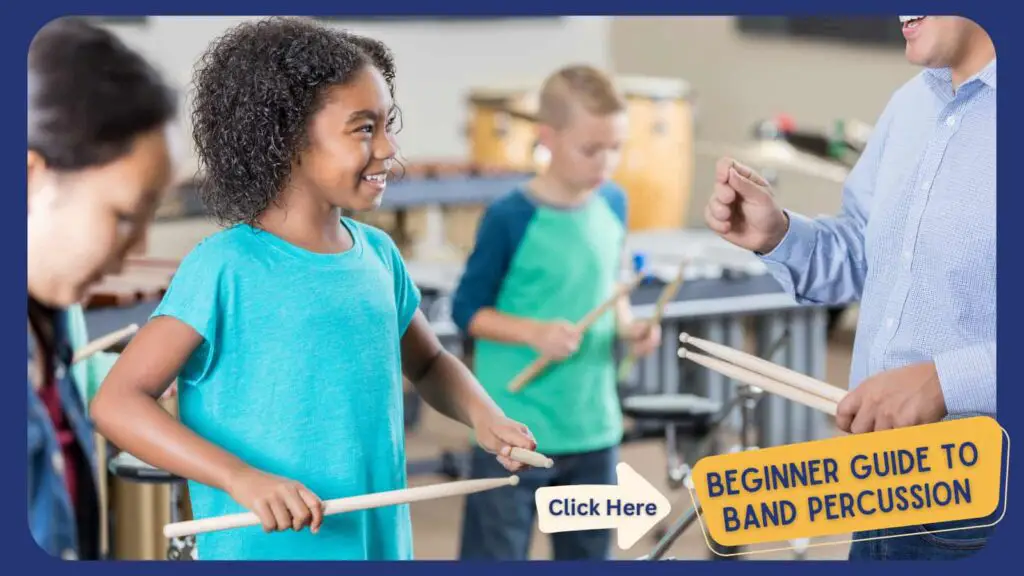
Maintenance and Care
Proper maintenance and care are essential for preserving the quality and longevity of percussion instruments. Regular cleaning, tuning, and replacing worn-out parts are crucial to ensure optimal performance.
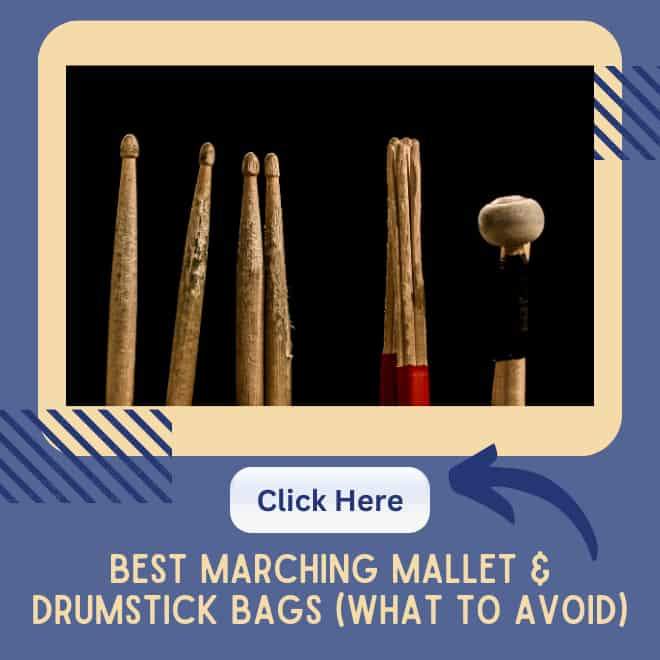
Storing instruments in suitable environments, protecting them from extreme temperatures and humidity, is vital to prevent damage. Following manufacturer guidelines and consulting experts can help percussionists maintain their instruments in top condition, allowing them to produce the best possible sound and performance.
Future of Percussion
As with all aspects of music, percussion instruments continue to evolve and adapt to the changing times. Innovations in materials, technology, and design are shaping the future of percussion.
Electronic percussion instruments offer endless possibilities for sound manipulation and experimentation. Hybrid instruments combine acoustic and electronic elements, expanding the sonic palette for percussionists.
As new musical genres emerge and boundaries are pushed, percussionists will continue to explore new techniques and push the boundaries of rhythm and sound.
Conclusion
Percussion instruments hold a special place in the world of music. From ancient rhythms to contemporary beats, they provide the pulse, the heartbeat that drives the music forward. Through their diverse range of instruments, playing techniques, and cultural significance, percussion instruments captivate our senses and ignite our passion for rhythm.
So, whether you find solace in the steady beats of a drum or the delicate chimes of a cymbal, embrace the power of percussion and let its rhythmic magic resonate within you.
FAQs
1. Can anyone learn to play percussion instruments? Absolutely! Percussion instruments are accessible to beginners and can be learned with dedication and practice. Start with a basic instrument and gradually progress to more advanced techniques.
2. Are there any age restrictions for learning percussion? There are no age restrictions for learning percussion. People of all ages can enjoy playing percussion instruments and benefit from the joy of creating rhythmic music.
3. How long does it take to become proficient in percussion? The time it takes to become proficient in percussion varies depending on individual dedication, practice routine, and natural aptitude. With regular practice and guidance, one can make steady progress over time.
4. Can percussion instruments be played solo or only in ensembles? Percussion instruments can be played both solo and in ensembles. Solo performances allow for individual expression, while ensemble playing fosters collaboration and the creation of intricate rhythmic compositions.
5. Are percussion instruments expensive? The cost of percussion instruments varies depending on the type, quality, and brand. There are options available for different budgets, ranging from affordable beginner instruments to professional-grade ones.
We hope this article has been helpful and informative for you in your musical journey. Please let us know if there is anything that we could add or change to make this article a better resource for our readers.
Please e-mail us at: [email protected] to let us know how we are doing!
Disclaimer: This post may contain affiliate links. We only recommend high-quality products that are used and recommended by real musicians. If you use these links to buy something we earn a small commission.

